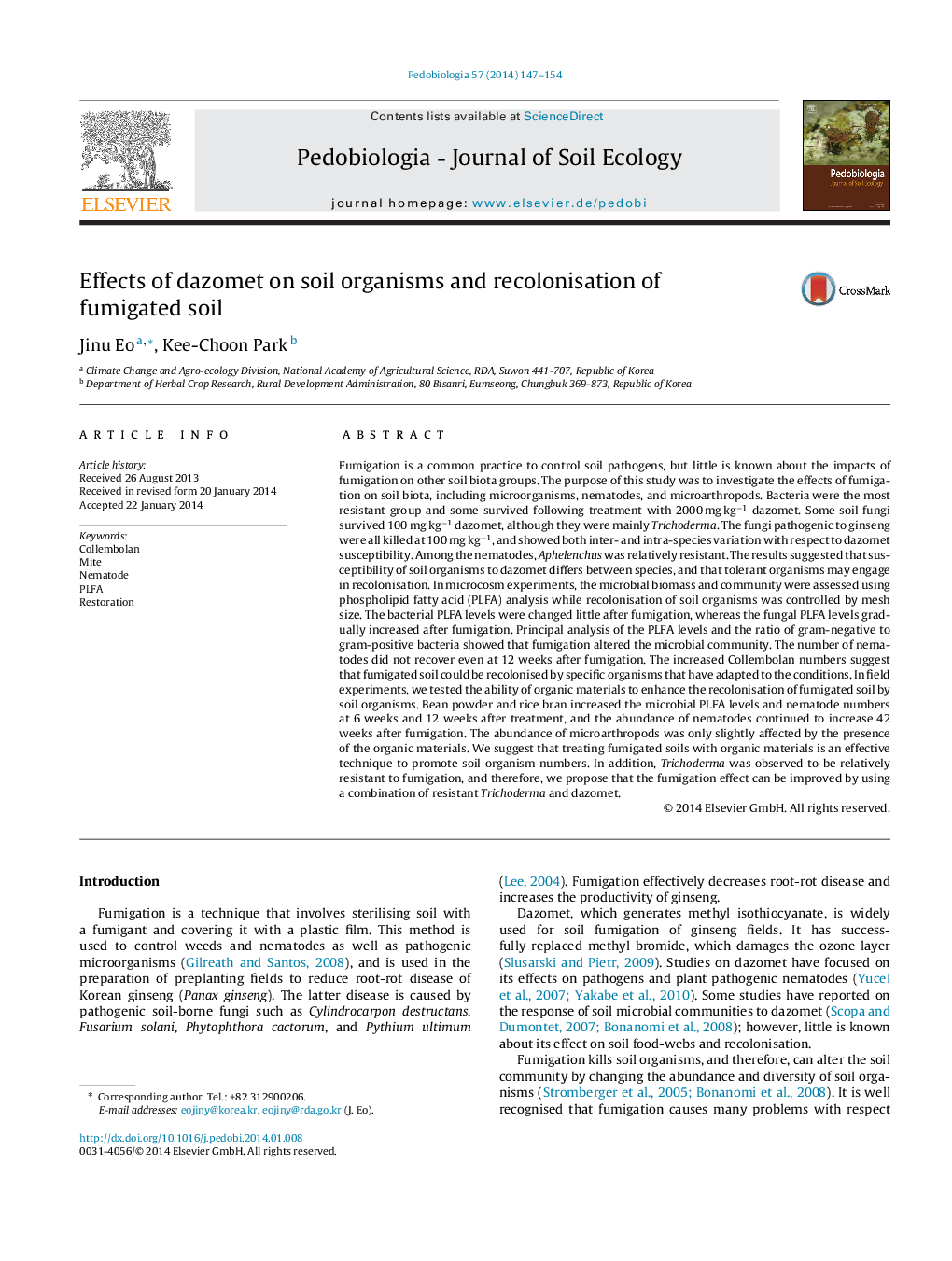| کد مقاله | کد نشریه | سال انتشار | مقاله انگلیسی | نسخه تمام متن |
|---|---|---|---|---|
| 2061059 | 1076431 | 2014 | 8 صفحه PDF | دانلود رایگان |

Fumigation is a common practice to control soil pathogens, but little is known about the impacts of fumigation on other soil biota groups. The purpose of this study was to investigate the effects of fumigation on soil biota, including microorganisms, nematodes, and microarthropods. Bacteria were the most resistant group and some survived following treatment with 2000 mg kg−1 dazomet. Some soil fungi survived 100 mg kg−1 dazomet, although they were mainly Trichoderma. The fungi pathogenic to ginseng were all killed at 100 mg kg−1, and showed both inter- and intra-species variation with respect to dazomet susceptibility. Among the nematodes, Aphelenchus was relatively resistant. The results suggested that susceptibility of soil organisms to dazomet differs between species, and that tolerant organisms may engage in recolonisation. In microcosm experiments, the microbial biomass and community were assessed using phospholipid fatty acid (PLFA) analysis while recolonisation of soil organisms was controlled by mesh size. The bacterial PLFA levels were changed little after fumigation, whereas the fungal PLFA levels gradually increased after fumigation. Principal analysis of the PLFA levels and the ratio of gram-negative to gram-positive bacteria showed that fumigation altered the microbial community. The number of nematodes did not recover even at 12 weeks after fumigation. The increased Collembolan numbers suggest that fumigated soil could be recolonised by specific organisms that have adapted to the conditions. In field experiments, we tested the ability of organic materials to enhance the recolonisation of fumigated soil by soil organisms. Bean powder and rice bran increased the microbial PLFA levels and nematode numbers at 6 weeks and 12 weeks after treatment, and the abundance of nematodes continued to increase 42 weeks after fumigation. The abundance of microarthropods was only slightly affected by the presence of the organic materials. We suggest that treating fumigated soils with organic materials is an effective technique to promote soil organism numbers. In addition, Trichoderma was observed to be relatively resistant to fumigation, and therefore, we propose that the fumigation effect can be improved by using a combination of resistant Trichoderma and dazomet.
Journal: Pedobiologia - Volume 57, Issue 3, May 2014, Pages 147–154